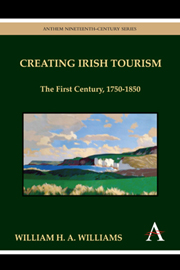Chapter 1 - Getting There and Getting About
from Part I
Published online by Cambridge University Press: 05 March 2012
Summary
When they embark on a journey, travelers begin a rite of passage, detaching themselves from their home and homeland, initiating a series of adventures and challenges, which, no matter how minimal, prepare them for their unfamiliar status as strangers in a new and different place. The longer and more difficult the trip, the greater their sense of leaving behind the certain and familiar for the strange and foreign. By the time of arrival the journey has already cost time and money, as well as the inevitable wear and tear on body, mind and spirit. Today's tourists must brave the traffic to the airport, negotiate crowds and endure delayed flights and endless security checks at the airport. Once on board the airplane, they must survive cramped seats and bad food. This is tame stuff, however, compared to travel a few centuries ago. Prior to the age of steam, anything beyond a trip to the next village required careful preparation, a good bit of time and much endurance.
Until the 1820s those British tourists intent on visiting Ireland had to first travel by coach or horseback to a western port and then board a sailing ship for a sea journey of uncertain duration and minimal comfort. For much of the eighteenth century, many Ireland-bound travelers went first to Chester, a six-to-seven day horseback ride from London. There they remained until they could take sail from Parkgate, a harbor twelve miles outside of the city.
- Type
- Chapter
- Information
- Creating Irish TourismThe First Century, 1750–1850, pp. 3 - 26Publisher: Anthem PressPrint publication year: 2010



